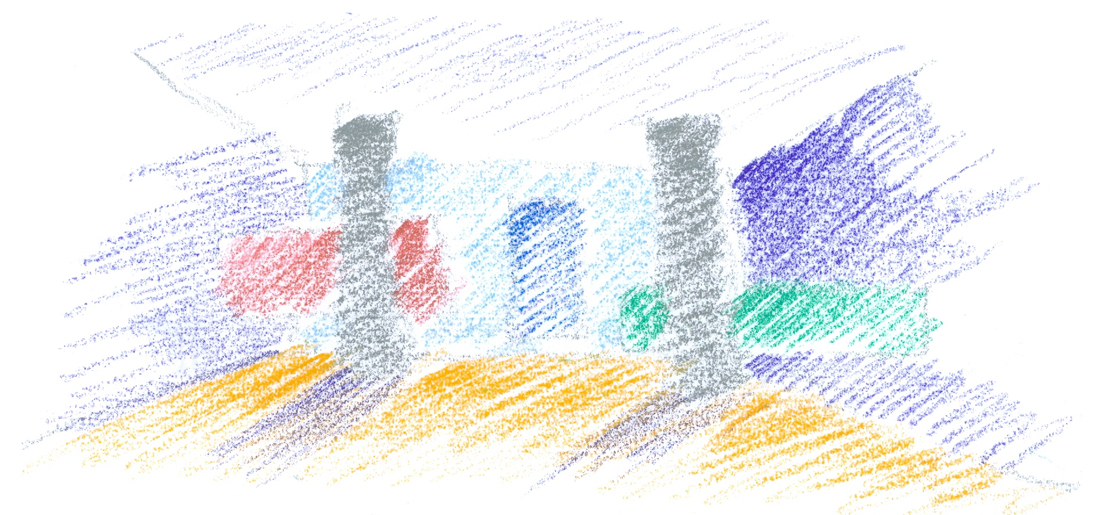 There is something within the concept of transparency that has crossed (like light through crystal) the architectural movement that comes from last century avant-gardes. Thom Mayne stated it explaining that “those ideas coming from the concept of transparency are one of the most relevant features of our time”1.
There is something within the concept of transparency that has crossed (like light through crystal) the architectural movement that comes from last century avant-gardes. Thom Mayne stated it explaining that “those ideas coming from the concept of transparency are one of the most relevant features of our time”1.
We could say that the fundamental purpose of this feature is the technology used to dissolve facades and to expand the crystal, originated more than a century ago, which offer the observer an aesthetic resource that allows the sight to play with an illusion of having a continuous interior/exterior or a unified architecture/landscape.
But there is something else. We owe Dutch neoplasticism the construction of a visual universe that value “oscillating relations that may arise from surfaces, lines and the air”2: a new environment for the imagination where drawing are superimposed, transparent, float and, sometimes, disappear, as in Mondrian paintings, without depth nor figure, just empty framed. In Le Corbusier work, also supported by Sigfried Gideon, “not only in pictures, but in reality the limits between houses disappear”. Splinter technology and slim porticoed structures could draw up a setting built up for the process of becoming transparent.
Even more: why not to talk about a longing significance transparency from some avant-gardes? Why not to talk about “things been things” from Susan Sontag?3, Why not to talk about buildings showing their aim to be and not only their corrode interior? A hope of not being a distinction between object and its significance, between form and content, that artists such as Robert Morris or Donald Judd would call “presentness” and “directness” respectively.
It is not accidental that an architectural culture such as the Japanese, whose traditional domestic settings are repressed by drawing translucent papers and pieces of lines in the air, has shown a determination for a process of visual dissolution. SANAA, Sou Fujimoto and Junya Ishigami (in that order),are the next steps for an ongoing search of an architecture that we cannot see, which aims for become atmosphere.
Our aim in the design for exhibition of Premio Andalucía de Arquitectura en el Real Alcázar de Sevilla (Andalusia Architecture Prize in Real Alcázar from Seville) was to use a “hidden transparency”. On one hand, we thought we have noticed a progressive dematerialization in Guillermo Vázquez Consuegra work (the object of the exhibition), a not really hidden tendency to approach more atmospheric products, with a less material presence and more transparent. On the other hand, we were confined within Sala del Apeadero in Real Alcázar of Seville, a conglomerate of heavy baroque pilasters, vault ceiling, superimposed ornamental motifs. Our challenge was to make this hall disappear, in an allusion to the way architecture has been exposed through time, showing a progressive wish to make it lighter and thinner in several aspects. Our task was to dissolve the limits of the enclosure by using a reveal halo. A bunch of diverse materials were used for the creation of an ice prism (depending on their location and type of construction), viewed from inside, as the local press used to say as a metaphor. Ice can be transparent depending on the type of conservation, but normally is reveal.
Years after the exhibition, Valentín Trillo talked about the return of a less known interior space from Mies van der Rohe on his doctoral thesis4 Among all several works of the Aachen master, most of them barely known, we can find an ice cube in Barcelona World Exhibition of 1929. An unexpected alter ego to the iconic German National Pavilion. It was Germany Electric Energy Pavilion, documented and restored by Grillo on the first time. It was an exterior pristine white cube, with a polished but with reveal lightened walls, probably the last consequence from all those compositional efforts of the author in the Splinter Industry Pavilion two years before, a drawing multidimensional composition without weight but with different levels of transparency.
Talking about the work of Caruso St John (an antithesis of a diluted architecture that worships transparency), Pier Vitorio Aureli states that the final consequence of domino model from Le Corbusier is an abolition of walls and facades as subjects of spaces5. Last transparency of a wall (and sometimes its triviality) comes from the purest stage of the process. On this route, the reveal drawing shows a fascinating characteristic: the wall has not yet disappeared, but light and shadows go through it. It let them cross but, paradogically and at the same time, it informs us about the substance that set up physical reality. It tells us about the impossibility of transparency (being real, phenomenological or from significance), from the permanent presence of the cavern and its myth.
1 Mayne, Thom. Conected Isolation, en Noever (ed.), Architecture in Transition, 1991.
2 Gideon, Sigfried. Building in France. Getty Center, Santa Monica, 1995
3 Sontag, Susan. Against Interpretation. Vintage, Londre, 1994.
4 Trillo, Valentín. Mies en Barcelona. Arquitectura, representación y memoria. Unpublished docoral thesis. Essential investigation document from the corpus for analysing Mies figure.
5 Aureli, Pier Vitorio, “The Thickness of Façade. Notes on the Work of Caruso St John”, in El Croquis, 166, Caruso St John 1993-2013

